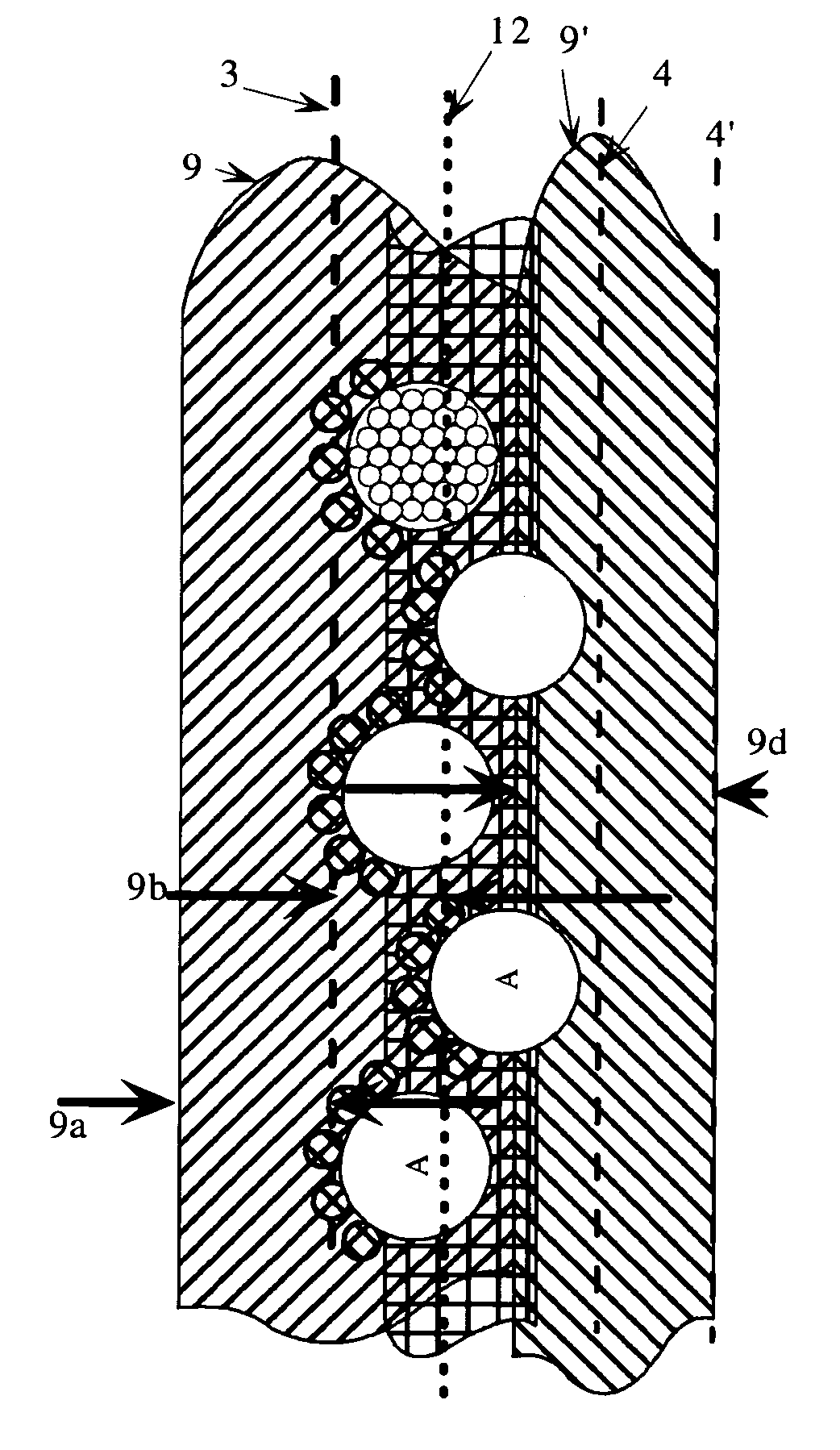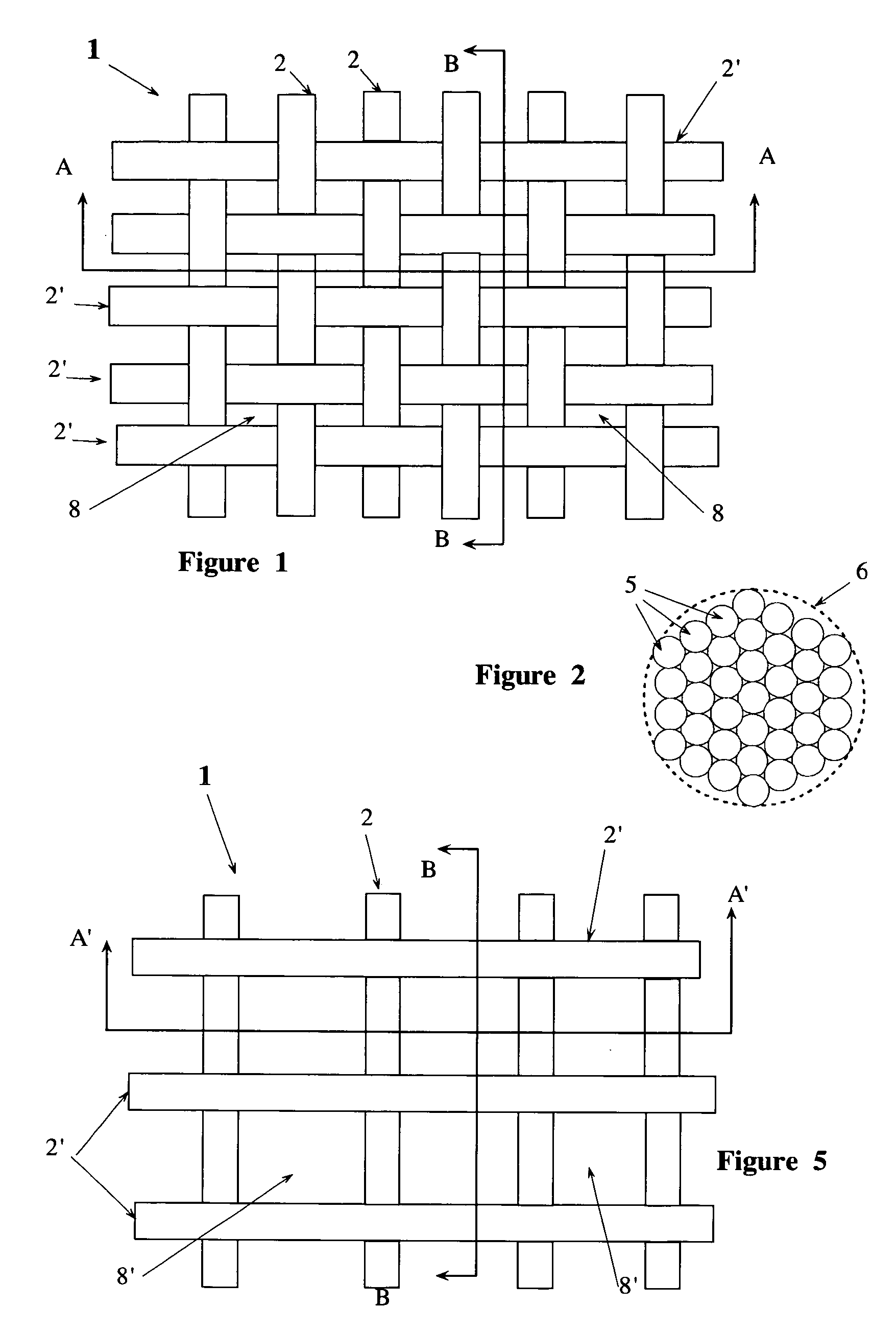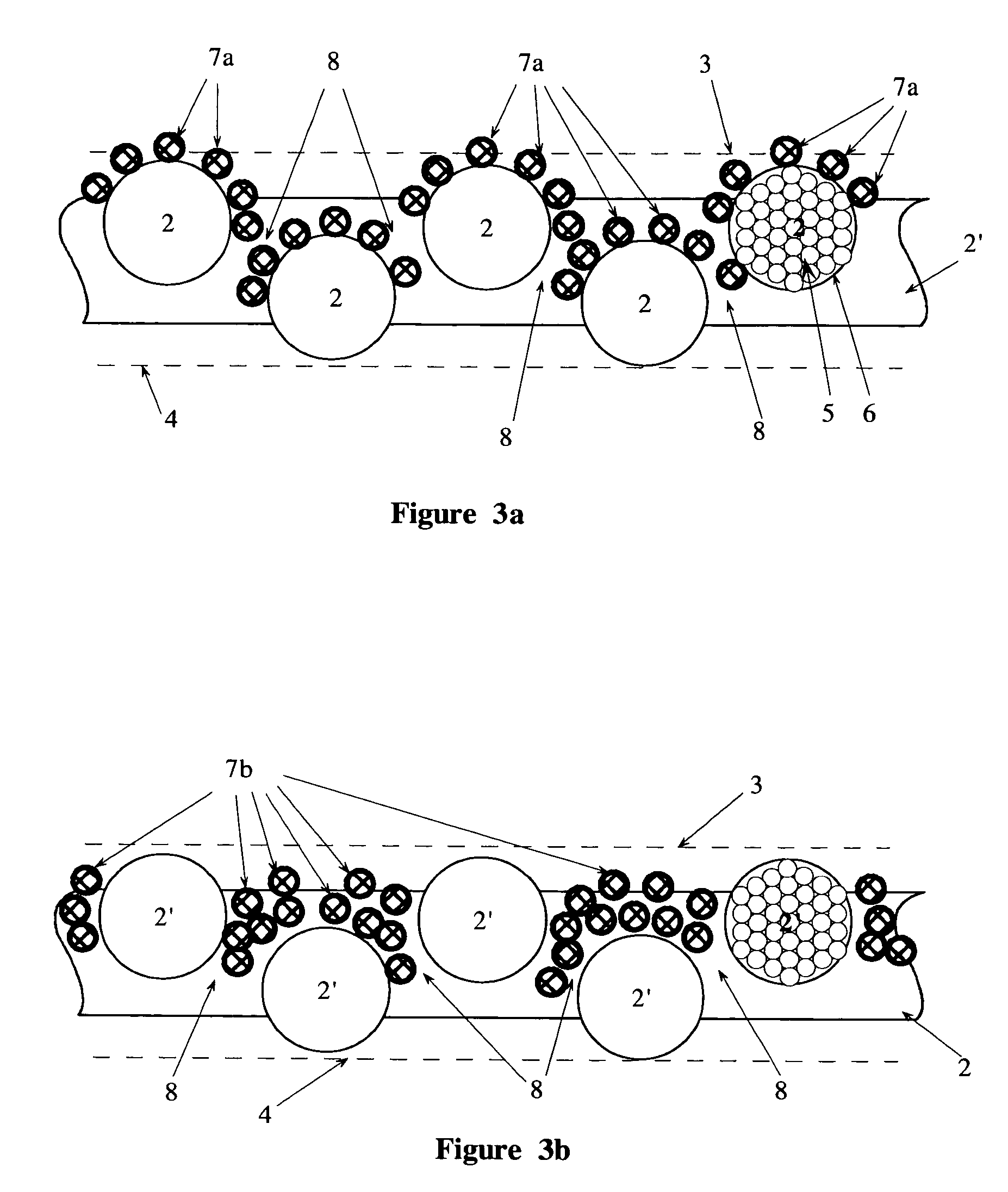Coated metalized fabric and process for edge bonding
a metalized fabric and edge bonding technology, applied in the field of coating metalized fabrics, can solve the problems of affecting the quality of the fabric, and the fabric is not suitable for use, and achieves the effects of low cost manufacturing, less costly, and continuous and reliable manufacturing
- Summary
- Abstract
- Description
- Claims
- Application Information
AI Technical Summary
Benefits of technology
Problems solved by technology
Method used
Image
Examples
Embodiment Construction
[0028] The present invention provides a coated fabric with a dimensionally stable non-extensible substrate, a metalized layer comprised of a multiplicity of substantially independent metal particles adhering to said substrate, and a coating layer extending over a substantial portion of said substrate, wherein said coating layer extends through the said layer and penetrates into the substrate, and, wherein said coating layer adheres directly to the substrate, such that substantially all of any stress on the said fabric is transferred directly between the coating layer and the substrate without substantial breakdown of the coating layer.
[0029] In a further aspect the invention provides a fabric wherein the substrate is comprised of woven or non-woven made-made fibres and is substantially inelastic and may be substantially non-electrically-conductive.
[0030] The metal particles are sufficiently independent of one another so as to prevent any substantial electrical conductivity in the ...
PUM
| Property | Measurement | Unit |
|---|---|---|
| stress | aaaaa | aaaaa |
| non-electrically conductive | aaaaa | aaaaa |
| electrical conductivity | aaaaa | aaaaa |
Abstract
Description
Claims
Application Information
 Login to View More
Login to View More - R&D
- Intellectual Property
- Life Sciences
- Materials
- Tech Scout
- Unparalleled Data Quality
- Higher Quality Content
- 60% Fewer Hallucinations
Browse by: Latest US Patents, China's latest patents, Technical Efficacy Thesaurus, Application Domain, Technology Topic, Popular Technical Reports.
© 2025 PatSnap. All rights reserved.Legal|Privacy policy|Modern Slavery Act Transparency Statement|Sitemap|About US| Contact US: help@patsnap.com



